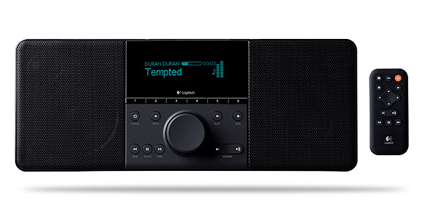Logitech tries to take network music player mainstream with Squeezebox Boom

In the press release announcing the new Squeezebox Boom, Robin Selden, vice president and general manager of Logitech’s Streaming Media business unit, says that “[t]he network music player will be the CD player of the 21st century." That may be true—eventually—but at $299.99, the Boom probably won't be it. Despite a price tag outside of what most users would pay to stream audio from the Web, the Boom does have some nifty features that provide a glimpse of what the network music player could offer everyday folks when it's priced for, well, everyday folks.
As with other streaming audio devices, the Boom detects nearby wireless networks when you first plug it in, then asks for a password if you're using an encrypted network (which it then saves so you don't need to re-enter it with every use). It lets you navigate Internet radio stations using its SqueezeNetwork interface, and will stream from popular sites like Pandora and Last.fm as well as subscription services like Rhapsody, Slacker, and even Sirius satellite radio (presumably via the lower-quality Internet streaming method). Even with your computer off, the Boom will be able to access the streaming sites. Of course, it also can play the audio files on your PC (via the SqueezeCenter utility), though not DRM-protected files like secure AAC-format tracks from the iTunes Music Store.
Logitech is touting the Boom's audio-quality bona fides, which include a built-in 30-watt amplifier and what it's calling "high-performance" speakers. There's an input for adding a dedicated subwoofer, suggesting that the high performance doesn't carry over to bass frequencies. In the company's defense, the unit is fairly compact, so speaker quality may indeed be better than average for its form factor. And the built-in speakers mean you don't have to hook it up to a separate receiver and speaker system, as you must do with many other streaming devices (including previous Squeezebox units). One thing the audiophile features won't be able to overcome are low-quality, bandwidth-saving streams along with the usual connection hiccups that come with Internet audio.
The Boom may have some competition with new HD radios, which are also still priced a little too high for widespread appeal. But it also will compete with the iPhone/iPod Touch, which now support apps for streaming audio and playing your home PC's music files remotely and can hook up to a similarly sized dock-and-speakers combo. And some of those can run on batteries, which the Boom can't do. There's little doubt the Boom will find its way onto the bedside table of some audiophile early adapters, but the price point means the network music player still won't come any closer to the CD player's ubiquity.
